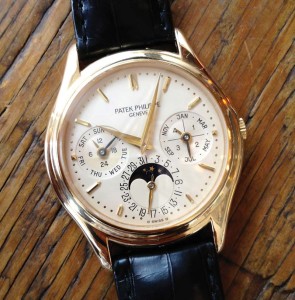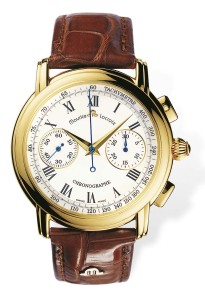Proceed with caution

Though Rolex is a popular brand for vintage or pre-owned watches, there is also demand for other high-end names, such as Patek Philippe, Audemars Piguet, and even Omega.
If a retailer wants to take advantage of the pre-owned luxury watch market, experts say they should proceed cautiously. “You need to know watches and you need to have the customers for it,” says Polan. “You’ve got to become an expert. Those who do can make good money at it.”
The biggest risk in pre-owned or vintage watches is the amount of money a retailer needs to put out upfront, says Aron. If you make the wrong pick, there’s no supplier to take back unsold merchandise, he says. Even less expensive watches, including newer trade-ins in the low thousands, can mean a substantial upfront cost for retailers.
“Retailers are scared because they don’t want to make a mistake,” says Aron, noting the sweet spot for pre-owned watches is in the $2500- to $7000-range.
It can also be a challenge to get watches fixed affordably in Canada, he notes, even for newer watches. For instance, Rolex does not sell parts to unauthorized dealers, instead requiring retailers to send in watches to be refurbished. For older pieces, like the ‘Paul Newman,’ however, Rolex can refuse to service it, due to liability issues in opening the case or authenticating a piece that may later be sold at auction. However, Aron says he has been able to make relationships with suppliers to get parts himself.

Since vintage pieces have increased in value, the foreign counterfeit business has flourished. In some cases, it can be virtually impossible to tell a fake from an authentic piece, Aron says. Given the threat, he says many collectors want to be able to trace a watch’s ownership back to its original purchaser. A box and papers are not always enough, he explains, adding he has asked clients to supply old photos of them wearing a watch to prove its authenticity. “Collectors go nuts for that type of thing.”
Aron recommends retailers reach out to watch experts to help navigate their sales and ensure they are buying an authentic watch at a fair price. One of the worst mistakes a retailer can make is offending a customer by making a low offer for a valuable timepiece, especially when he or she can easily look up the value online. “It’s a formula and everyone has Google,” he says, warning retailers to avoid reducing themselves to the likes of a pawn shop. “If you do that to someone who has been a client for 20 years, he’s going to walk.”
Building relationships with customers is especially important in vintage watches because it tends to be the same clients who sell and buy watches repeatedly, he notes.
If a retailer invests the time in learning about this segment of the market, there is great potential for new customers, adds Polan. He’s watched the industry blossom and expects the trend to continue.
“I think it’s an industry that’s only going to grow.”
Nicole MacIntyre is a journalist and freelance writer based in Burlington, Ont. She has covered breaking news, politics, and lifestyle issues for nearly a decade. MacIntyre has received multiple nominations and awards for her work, including an Ontario Newspaper Award.





